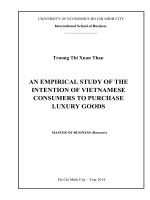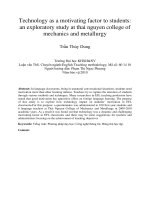An exploratory study of business to consumer e commerce adoption by businesses in singapore
Bạn đang xem bản rút gọn của tài liệu. Xem và tải ngay bản đầy đủ của tài liệu tại đây (442.55 KB, 131 trang )
AN EXPLORATORY STUDY OF BUSINESS TO
CONSUMER E-COMMERCE ADOPTION
BY BUSINESSES IN SINGAPORE
GOH HUAT CHOON CANDICE
(Bsc (Hons) Information Technology)
A THESIS SUBMITTED
FOR THE DEGREE OF MASTER OF ARTS
COMMUNICATIONS AND NEW MEDIA PROGRAMME
NATIONAL UNIVERSITY OF SINGAPORE
2005
ACKNOWLEDGEMENTS
I thank my supervisor, A/P Milagros Rivera Sánchez, for her dedicated guidance
and support leading to the completion of this thesis. I also acknowledge the
support of Dr Hichang Cho, Dr Lim Sun Sun, and all the staff at my department
for their kind assistance during my stint with the department.
Special thanks to the staff at the Infocomm Development Authority (IDA) for their
willingness to answer my questions. I also wish to express my gratitude to Mr
Yeo Guan Kai (Accenture), Mr Gerard Lim (Convertium) and Mr Cheong Yen Pin
(Muu-Consulting), for taking time to participate in my interviews and providing
their expert views regarding B2C e-commerce in Singapore.
Finally, I would like to thank my dear friend, Pamela Yeo, for her advice,
encouragement and support throughout the duration of my Masters programme.
-i-
TABLE OF CONTENTS
ACKNOWLEDGEMENTS ................................................................................................................ I
TABLE OF CONTENTS.................................................................................................................. II
SUMMARY ..................................................................................................................................... III
LIST OF TABLES........................................................................................................................... VI
LIST OF FIGURES ........................................................................................................................ VII
1.
INTRODUCTION ................................................................................................................... 1
2.
LITERATURE REVIEW ......................................................................................................... 8
2.1 GOVERNMENT AND PUBLIC POLICIES ................................................................................................ 9
2.2 E-COMMERCE REGULATION IN SINGAPORE ..................................................................................... 13
2.3 CONSUMERS IN B2C E-COMMERCE ............................................................................................... 21
2.4 BUSINESSES IN B2C E-COMMERCE ................................................................................................ 25
2.5 INTERNET AND E-COMMERCE ADOPTION MODELS ............................................................................ 28
2.6 APPLYING THE E-COMMERCE ADOPTION MODEL TO B2C E-COMMERCE CASES IN SINGAPORE ............ 34
2.7 EXPLORING FACTORS INFLUENCING B2C E-COMMERCE ADOPTION IN SINGAPORE ............................. 40
3.
RESEARCH METHODOLOGY ........................................................................................... 43
3.1 EXPERT INTERVIEWS ...................................................................................................................... 43
3.2 INTERNET SURVEY ......................................................................................................................... 47
4.
FINDINGS ............................................................................................................................ 52
4.1 BACKGROUND .............................................................................................................................. 52
4.2 OPINIONS ABOUT B2C E-COMMERCE IN SINGAPORE ........................................................................ 54
4.3 MATCHING OF GOVERNMENT AND BUSINESS EXPECTATIONS ............................................................. 56
4.4 AWARENESS OF E-COMMERCE REGULATORY AND LEGAL FRAMEWORK.............................................. 71
4.5 OTHER FACTORS AFFECTING E-COMMERCE PARTICIPATION ............................................................. 75
4.6 SUMMARY OF FINDINGS ................................................................................................................. 82
5.
CONCLUSION..................................................................................................................... 88
6.
BIBLIOGRAPHY ................................................................................................................. 96
7.
APPENDICES.................................................................................................................... 114
7.1 INTERVIEW QUESTIONS FOR INDUSTRY EXPERTS ........................................................................... 115
7.2 INTERVIEW QUESTIONS FOR IDA .................................................................................................. 116
7.3 INTERNET SURVEY QUESTIONNAIRE.............................................................................................. 117
- ii -
SUMMARY
Many market research companies forecast that business to consumer (“B2C”)
e-commerce will register higher growth rates in the coming years due to the rapid
increase in Internet penetration and IT literacy globally. Singapore possesses
high Internet penetration and IT literacy.1
In 2004, Singapore ranked 7th in e-
readiness, ahead of other countries in the Asia Pacific region such as Hong Kong
(9th), Japan (25th), Korea (14th), Australia (12th) and New Zealand (19th).2
Singapore has the legal and policy framework, infrastructure, and capabilities to
promote the use of the Internet and the governance of e-commerce. However, at
9%, Singapore ranked lower than the other countries such as Korea (12%) and
New Zealand (14%) in the level of B2C e-commerce participation.3
Most research has focused on the factors affecting the willingness of consumers
to participate in e-commerce in Singapore.4 This thesis explores and attempts to
1
Infocomm Development Authority. Annual survey on infocomm usage in households and by individuals for
2003. Annual survey on infocomm usage in businesses for 2003. www.ida.gov.sg.
2
th
Economist Intelligence Unit. The 2004 e-readiness rankings. Singapore (7 ), Hong Kong (9th), Australia
(12th), Korea (14th), New Zealand (19th) and Japan (25th). />
3
Nielsen//NetRatings, Global Internet trends 2001, Percentage of Internet users age 16+ that have ever
made an online purchase. Singapore (9%), Korea (12%) and New Zealand (14%).
/>4
For example, Rivera et al. (a) examined privacy concerns among online consumers in five countries
including Singapore, and Teo (b) conducted a detailed study of the factors influencing consumer
participation in e-commerce in Singapore.
(a) />(b) Attitudes toward online shopping and the Internet. Behaviour & Information Technology, 21(4), 259 - 271.
- iii -
identify the factors influencing B2C e-commerce participation among businesses
by (1) exploring the factors affecting businesses’ participation, (2) assessing the
level of e-commerce development in Singapore, (3) assessing whether there is a
divide between what businesses expect the government to do to promote ecommerce and what the government is actually doing, and (4) identifying
businesses’ awareness of e-commerce regulatory framework. Thus, this thesis
seeks to explore the factors affecting B2C e-commerce adoption in Singapore.
A combination of qualitative and quantitative research methods were used in this
thesis -- expert interviews with the Infocomm Development Authority (“IDA”) and
three industry experts, as well as an Internet survey inviting participation from
900 Singapore businesses. The interview with IDA provided insights regarding
the regulation and promotion of B2C e-commerce from the Government.
Similarly, the interviews with the industry experts generated an understanding of
the perspectives from Internet businesses based on the experts’ experiences, as
well as the experts’ views regarding the status, growth and factors influencing
B2C e-commerce adoption in Singapore. The Internet survey represented the
opinions from businesses and enabled the author to assess the relationship
between businesses’ awareness and expectations about the Government’s
actions.
This study found that B2C e-commerce in Singapore is still in its infancy but is
perceived to hold great potential. The key finding from this study revealed that
- iv -
the low level of B2C e-commerce adoption by Singapore businesses was due to
the lack of perceived benefits. In addition, this study also found that the overall
businesses in the sample were not familiar with the existing e-commerce laws,
policies and resources, as well as the assistance provided by the Government.
The findings of this study could have significant implications for the growth of
B2C e-commerce in Singapore. This study provided insights into factors that can
be utilized by authorities such as the IDA, the Ministry of Law and other relevant
Government ministries to provide more focus in their promotional and regulatory
efforts, which may lead to greater participation in B2C e-commerce in Singapore.
-v-
LIST OF TABLES
Table
Description
Page
1
Internet Survey Demographics
53
2
Opinion about B2C E-Commerce Success and Potential
54
3
B2C E-Commerce Status
55
4
Opinion about Government Support for B2C E-Commerce
57
5
Awareness of E-Commerce Laws
72
6
Awareness of E-Commerce Policies and Resources
73
7
Building a Website - Other Factors
81
8
Building B2C E-Commerce Capabilities - Other Factors
81
- vi -
LIST OF FIGURES
Figure
Description
Page
1
Web Adoption Model
29
2
Website Evolution Model
30
3
Internet Adoption Contingent Model
31
4
E-Commerce Adoption Model
33
- vii -
An Exploratory Study of Business to Consumer E-Commerce Adoption by Businesses in Singapore
Introduction
Singapore launched the Electronic Commerce Masterplan in 1998 with the
vision of developing the country into an international electronic commerce (“ecommerce”) hub. The various initiatives in the plan targeted the introduction
of e-commerce to mainstream businesses and the public and the attraction of
international e-commerce activities to Singapore. (IDA, 1998).
With the accelerated growth of the Internet and the compelling innovations
over the World Wide Web, e-commerce has become the most recent
breakthrough in the evolution of business transactions. (Ong, 2000).
According to the Infocomm Development Authority (“IDA”), e-commerce
revenue in Singapore grew from US$22.03 billion in 1999 to US$51.1 billion in
2000. Although the majority of Singapore's e-commerce revenue came from
business-to-business
(“B2B”)
sales,
business-to-consumer
(“B2C”)
e-
commerce spending in the country grew from US$109.91 million in 1999 to
US$641.45 million in 2000 (Enos, 2001).
The Organization for Economic Co-operation and Development (“OECD”)
claims that there is no firm definition of e-commerce. E-commerce generally
refers to doing business over the Internet. (OECD, 2000). The International
Federation for Accountants defined e-commerce as the process by which
either individuals or companies engage in a variety of commercial
transactions electronically and without paper documents. (IFAC, 1998).
Page 1 of 123
An Exploratory Study of Business to Consumer E-Commerce Adoption by Businesses in Singapore
Bakos (1997) defined e-commerce as an electronic marketplace or electronic
market system that allows participating buyers and sellers to exchange
information about prices and product offerings. Teo (2002) explained that ecommerce involves consumers and firms conducting business on the Internet,
while Gibbs, Kraemer and Dedrick (2002) defined e-commerce as the use of
the Internet to buy, sell or support products and services. This research will
adopt the definition provided by Gibbs et al. (2002) as it provides a clear and
complete description of the “commerce” aspect of e-commerce -- “buy, sell or
support product and services”; as well as the “e” aspect of e-commerce, “the
use of the Internet”.
Seebacher (2002) stated that there are several types of e-commerce, with the
most well known being business-to-business (“B2B”) and business-toconsumer (“B2C”).
Seebacher (2002) explained that B2B e-commerce is
web-based, inter-organization commerce that is usually supported by a predefined data exchange format based on technologies such as Common
Object Request Broker Architecture (“COBRA”) and Electronic Data
Interchange (“EDI”), or Electronic Data Interchange for Administration,
Commerce and Transport (“EDIFACT”). Jagannathan, Srinivasan and Kalman
(2002) explained that B2C e-commerce involves transactions initiated by a
consumer and conducted with an online retail establishment such as a
software company, book or music store, travel agency or a bank. According
to IDA, the leading B2C revenue in Singapore came from the finance /
banking, real estate / business, manufacturing, and wholesale / retail sectors
(Enos, 2001).
Page 2 of 123
An Exploratory Study of Business to Consumer E-Commerce Adoption by Businesses in Singapore
E-commerce creates a global marketplace, introduces new forms of business
opportunities and provides new ways of doing business. E-commerce entities
could be online extensions of traditional brick-and-mortar businesses (“clickand-mortar”) or they could operate entirely on the Internet (“pure-play”).
Likewise, e-commerce businesses provide a wide range of products and
services.
These include the sale of products such as clothes, electronic
items, or books, which require physical delivery; the sale of digital products
such as e-books, mp3 music or online movies, which do not require physical
distribution; and the provision of services such as electronic banking, online
air ticketing, or hotel bookings and electronic auctions. (Jagannathan et al.,
2002; Huff et al., 2000).
Although it has been observed that B2B e-commerce contributed a larger
portion of the total e-commerce revenue for most countries, B2C e-commerce
involves larger numbers of organizations and consumers and has been
identified as an area with great growth potential. (Gibbs et al., 2002; MBDA,
2004). It is the view of many market research companies, such as Forrester
Research and eMarketer, that B2C e-commerce will enjoy higher growth rate
in the coming years. (GCIS, 2003). eMarketer estimated that the total B2C ecommerce sales were likely to rise from US$8.2 billion in 2001 to US$38
billion in 2004. (Nua.com, 2002). Ross Rubin, Senior Analyst of eMarketer,
attributed the dynamic growth of B2C e-commerce to the increasing
availability of the Internet and the adoption of broadband. (GCIS, 2003).
Page 3 of 123
An Exploratory Study of Business to Consumer E-Commerce Adoption by Businesses in Singapore
With the increase in B2C e-commerce adoption around the world, research in
this area is plentiful (Gibbs et al.,2002; Seng, 2002; Chan et al., 2002; Wong,
1996, 1998, 2003; Rivera et al. , 2004; Teo, 2002). From the literature review,
the author found that many studies have focused on issues related to
government policies and consumers, but not much research has been carried
out to examine the factors influencing B2C e-commerce participation by
businesses.
Therefore, this research will explore the business side and
attempt to understand the factors influencing B2C e-commerce adoption by
businesses in Singapore.
The level of Internet penetration, information and communication technology
(“ICT”) infrastructure, legal infrastructure and the availability of skilled IT
personnel are factors most commonly highlighted as determinants of ecommerce adoption (Gibbs et al.,2002; Seng, 2002; Chan et al., 2002; Wong,
2003).
Singapore is one of the first countries in Asia to focus on the
development of information technology (“IT”) as a strategic factor for
promoting economic development.
Since the early 1980s, Singapore had
developed an advanced ICT infrastructure prior to the influx of the Internet
and e-commerce (Wong, 1996, 1998). Singapore also took the initiative to
create an environment that included the necessary legal and policy
framework, infrastructure, and capabilities to promote the use of Internet.
One major initiative was the institution of the Electronic Transactions Act in
1998, which provided a legal framework to support e-commerce transactions
(IDA, 2003).
Page 4 of 123
An Exploratory Study of Business to Consumer E-Commerce Adoption by Businesses in Singapore
In addition, Singapore possesses high Internet penetration and IT literacy. In
the 2004 Annual Survey on Infocomm Usage in Households and by
Individuals, IDA found that 74% of all households in Singapore owned one or
more personal computers and 65% of all households in Singapore have
Internet connections (IDA, 2005). Similarly, in the 2004 Annual Survey on
Infocomm Usage in Businesses, IDA found that 83% of all businesses in
Singapore use computers, laptops or workstations.
Seventy six percent
(76%) of businesses in Singapore have Internet connections, with 59% having
broadband connections. (IDA, 2005).
Singapore’s IT readiness has scored top positions on many global rankings.
For example, Singapore ranked 7th, in the 2004 e-Readiness Rankings by the
Economist Intelligence Unit (“EIU”), ahead of other countries in the Asia
Pacific region such as Hong Kong (9th), Japan (25th), Korea (14th), Australia
(12th) and New Zealand (19th). The EIU e-Readiness Rankings is an annual
publication that examines the world’s 60 largest economies in terms of ebusiness environment and a series of factors that indicate each country’s
inclination towards Internet-based opportunities (EIU, 2004). Likewise, in the
latest Global Information Technology Report 2004-2005, Singapore ranked
1st out of 104 countries, including the United States (5th), Hong Kong (7th),
Japan (8th), Korea (24th), Australia (11th) and New Zealand (21st). This
report measures the Network Readiness Index (“NRI”), which estimates
various aspects of a country’s ICT development in terms of the regulatory
regime, legal framework, overall infrastructure and other factors influencing
the environment for technological development.
Page 5 of 123
In addition, the NRI
An Exploratory Study of Business to Consumer E-Commerce Adoption by Businesses in Singapore
measures the actual readiness of the economy by examining the readiness
and usage of ICT by three main stakeholders in the economy: the individuals,
businesses, and governments (World Economic Forum, 2005).
Despite these high rankings in e-readiness, Singapore has derived a lower
level of B2C e-commerce participation at 9%, compared to other countries
such as Korea (12%) and New Zealand (14%), which ranked lower in terms of
e-readiness (Nielsen//NetRatings, 2001). It seems that the environmental and
policy factors measured by rankings, such as those highlighted by Gibbs et al.
(2002), as key determinants of e-commerce diffusion may not be sufficient to
explain how to encourage and sustain B2C e-commerce participation in
Singapore. In other words, Singapore has a highly developed Internet
environment but this has not translated into intensive B2C e-commerce
participation.
Some studies have examined factors that affect consumers’ willingness to
participate in e-commerce in Singapore. For example, Rivera et al. (2004)
examined privacy concerns among online consumers in five countries,
including Singapore; and Teo (2002) conducted a detailed study of the factors
influencing consumer participation in e-commerce in Singapore. These two
studies found that cost, security and privacy were some of the major concerns
of the consumers. Moreover, in the latest 2004 Survey on Infocomm Usage in
Households and by Individuals, IDA found that the two main reasons for
Singaporeans’ unwillingness to participate in B2C e-commerce are: (1) a
Page 6 of 123
An Exploratory Study of Business to Consumer E-Commerce Adoption by Businesses in Singapore
preference to do actual shopping and (2) concerns about the security of
transacting over the Internet (IDA, 2005).
This study attempts to explore the reasons for the low level of e-commerce
participation among businesses in Singapore. Specifically, this study seeks to
identify the factors influencing B2C e-commerce participation among
businesses by (1) exploring the factors affecting businesses’ participation, (2)
assessing the level of e-commerce development in Singapore, (3) assessing
whether there is a divide between what businesses expect the government to
do to promote e-commerce and what the government is actually doing, and
(4) identifying businesses’ awareness of e-commerce regulatory framework.
The next chapter examines the existing literature covering studies of B2C ecommerce in Singapore and highlights the contributions to be made by this
research. Chapter Three will present the research methodology with details
of the selection of sample and the fieldwork that was conducted to derive the
findings.
Chapter Four will present the findings of this research and will
answer the research questions. Finally, Chapter Five concludes this thesis
with a summary and suggestions for future research.
Page 7 of 123
An Exploratory Study of Business to Consumer E-Commerce Adoption by Businesses in Singapore
Literature Review
The penetration of the Internet and the introduction of e-commerce have
revolutionized businesses.
The adoption of e-commerce is viewed as
essential for the growth of businesses in the 21st century. In the words of one
author, “It is not a matter of choice; it is a matter of survival” (ERNAP, 2004).
As discussed earlier in this thesis, the general definition of e-commerce is the
buying and selling of goods and services using the Internet (Teo, 2002; Gibbs
et al., 2001). E-commerce involves business transactions over the Internet
and must be differentiated from having a web presence, i.e. businesses
providing information on their websites.
E-commerce has emerged as one of the most active research areas in
multidisciplinary studies. While some studies focus on the regulatory aspect
of e-commerce and some on specific e-commerce technology or usage,
others focus on factors influencing e-commerce adoption, including ecommerce adoption models. This thesis explores the regulatory framework,
level of adoption, factors influencing adoption, and examines the activities
necessary to promote growth in B2C e-commerce in Singapore.
E-commerce research has focused on the three dominant players in B2C ecommerce: the buyer, the seller, and the government.
In most B2C e-
commerce, the business or seller will trade directly with the consumers or
Page 8 of 123
An Exploratory Study of Business to Consumer E-Commerce Adoption by Businesses in Singapore
buyers (e.g. amazon.com).
In some cases, online marketplaces, such as
eBay and Monster.com, may exist as virtual forums that enable buyers and
sellers to meet, exchange information and then transact. Such marketplace
exists to provide value added services such as directory service, search tools
and advisory service. The marketplace also promotes trust, as buyers and
sellers trading via the marketplace usually know and trust the marketplace
more than each other as individuals (Jagannathan et al., 2002).
More
importantly, the government plays a critical role in the development of B2C ecommerce as most of the legal and technical infrastructure required for the
execution of B2C e-commerce has to be provided by the government.
Moreover, the government will need to regulate and support the growth of
B2C e-commerce.
This chapter examines existing literature related to the government, public
policies and studies focusing on consumers and businesses in the research of
B2C e-commerce, particularly in Singapore.
It also explores the gaps
identified from the literature review and highlights the focus of this study.
The following section reviews the government and public policies that
supports the development of e-commerce in Singapore.
2.1 Government and Public Policies
Singapore is one of the first countries in Asia to focus on the development of
information technology as a strategic factor for promoting economic
development.
Since the early 1980s, Singapore developed a relatively
Page 9 of 123
An Exploratory Study of Business to Consumer E-Commerce Adoption by Businesses in Singapore
advanced information and communications technology infrastructure prior to
the influx of the Internet and e-commerce (Wong, 1996, 1998).
In 1992, Singapore initiated the IT2000 Master Plan, aimed at transforming
the nation into an intelligent island by rolling out broadband networks to link
homes, schools and the workplace. According to the Infocomm Development
Authority (“IDA”), Singapore was the first country in the world to have a
nationwide broadband network.
In 1998, the Singapore Government
(“Government”) launched Singapore ONE, with the collaboration of the
industry, to enable the roll-out of a nationwide broadband infrastructure and
encourage the development of interactive broadband multimedia applications
and services (IDA, 2003).
In 2000, the Government launched the ICT21
Master Plan with the aim to transform Singapore into Asia Pacific's leading
info-communications hub (Sivanesan et al., 2000).
The latest initiative,
Intelligent Nation 2015 Master Plan (“iN2015”), aims to promote Singapore as
a global digital trading hub and examine how ICT can be used to improve
competitiveness and more effective inter-business collaboration. Intelligent
Nation 2015 Master Plan looks at how the infocomm technologies of the
future will benefit businesses and consumers (IDA, 2005).
The IDA has played a major role in nurturing an environment that promotes
the growth of e-commerce in Singapore. The initiative to create such an
environment includes putting in place the necessary legal and policy
framework, infrastructure, and capabilities to promote the use of Internet.
One major initiative was the passing of the Electronic Transactions Act
Page 10 of 123
An Exploratory Study of Business to Consumer E-Commerce Adoption by Businesses in Singapore
(“ETA”) in 1998, which provided a legal framework to support e-commerce
transactions.
Other initiatives to promote e-commerce included the
establishment of the TrustSG seal, a nation-wide trust mark created to help
build confidence in e-commerce transactions, especially in the area of privacy
and security (IDA, 2003).
Many studies have focused on the regulatory infrastructure and environment
factors that may influence the success of e-commerce (Wong, 1996, 1998,
2001, 2003, Gibbs et al., 2002; and Goh, 2002). Gibbs et al. (2002) stated
that government policies -- liberalization, promotion, and regulations -- were
one of the key determinants of e-commerce diffusion in the case studies of 10
countries: Brazil, China, Denmark, France, Germany, Mexico, Japan,
Singapore, Taiwan, and the United States. The study found that government
policies that support trade and telecommunications liberalization, which lower
prices for Internet access, would encourage higher Internet adoption and
increase e-commerce participation from consumers and businesses.
In
addition, the study also indicated that governments needed to provide
sufficient protection for buyers and sellers to generate confidence and
increase participation in e-commerce.
Wong (2003) examined the factors affecting e-commerce diffusion in
Singapore and focused on whether the government’s early investment in IT
had facilitated the transition into e-commerce development. The study noted
that Singapore possesses adequate demographic, physical, and technical
infrastructure to support the development of e-commerce.
Page 11 of 123
In addition,
An Exploratory Study of Business to Consumer E-Commerce Adoption by Businesses in Singapore
Singapore had a large number of skilled IT personnel to support the growth of
e-commerce. Wong pointed out that the adoption of e-commerce within public
sector contributed to the diffusion of e-commerce in Singapore, and that the
Singapore government had put a lot of effort into the development of public
policies to promote e-commerce.
In addition, Wong highlighted two e-commerce initiatives by the Government - the E-Commerce Hotbed Program in 1996, which aimed to develop the ecommerce legal and technical infrastructure and the more comprehensive
Electronic Commerce Master Plan in 1998, which aimed to develop Singapore
into an international e-commerce hub.
Overall, Wong suggested that
Singapore had achieved relatively higher e-commerce diffusion compared to
most other countries.
policies.
He attributed this success to proactive government
However, he indicated that B2C e-commerce development was
significantly lower than B2B.
This rapid advancement of technology also led the Singapore Academy of
Law to conduct a study on the impact of the regulatory framework on ecommerce in Singapore. The study aimed to understand the effectiveness of
the regulatory framework in supporting e-commerce and to identify how the ecommerce laws and policies could be enhanced to encourage greater ecommerce activities in Singapore (Goh, 2002).
The study credited the
successful diffusion of technology in Singapore to the various initiatives and
programmes implemented by the Government over the years.
Page 12 of 123
An Exploratory Study of Business to Consumer E-Commerce Adoption by Businesses in Singapore
In the study, Goh examined the governance of ICT in Singapore, describing of
the role played by the various ICT regulators such as the IDA predecessors,
National Computer Board, and Telecommunication Authority of Singapore. In
addition, the study highlighted that the International Enterprise Singapore and
SPRING Singapore provided the promotional role, and the Ministry of Law
and Attorney-General’s Chambers supported the establishment of the legal
infrastructure. Goh stated that the IDA was subsequently made the regulatory
and promotional body to achieve a better alignment of the efforts in these
functions.
Goh claimed that Singapore’s policies tried to maintain a balance in allowing
adequate control while providing flexibility for the industry to grow. In addition,
the study discussed a compilation of Singapore’s ICT policies related to ecommerce.
All researchers are in agreement that Singapore is an early starter in ecommerce development and that the Government has effectively instituted
various policies and assistance to support the growth of e-commerce (Teo,
2002; Gibbs et al., 2001; Wong, 2003). The following section examines the ecommerce regulation in Singapore.
2.2 E-Commerce Regulation in Singapore
This section provides an overview of the studies that have examined
Singapore’s e-commerce policies as well as the channels provided by the
Government to direct or assist e-commerce. This discussion is based on the
Page 13 of 123
An Exploratory Study of Business to Consumer E-Commerce Adoption by Businesses in Singapore
categories suggested by Shinohara (2001), who stated that the rules required
for the governance of e-commerce comprises: (1) contract validity and digital
certification, (2) consumer protection and regulation of harmful content, (3)
protection of privacy, (4) security, (5) taxes and custom duties, (6) intellectual
property rights and patents, (7) internet domain names, and (8) alternative
dispute resolution.
Other writers have covered similar areas (Ong, 2000;
Goh, 2002), but Shinohara provided a more comprehensive framework.
(1) Contract Validity and Digital Certification
The main legal infrastructure to facilitate e-commerce transactions was
established in Singapore in 1998 with the passing of the Electronic
Transaction Act (“ETA”). This Act covers the area of contract validity and
digital certification. In a traditional business environment, the signature of a
party engaging in a contract signifies the person’s identity and marks his
intention to commit himself legally. In the e-commerce environment, the ETA
provides a legal foundation for electronic signatures, gives legal recognition to
contracts formed electronically, and forms the basis for the establishment of a
Public Key Infrastructure (“PKI”).
The ETA follows closely the Model Law on Electronic Commerce issued by
the United Nations Commission on International Trade Law (“UNCITRAL”),
which sets the framework for electronic laws in many countries (IDA, 2002).
Page 14 of 123
An Exploratory Study of Business to Consumer E-Commerce Adoption by Businesses in Singapore
(2) Consumer Protection and Regulation of Harmful Content
Singapore
established the
Consumer Protection
(Fair Trading) Act,
Misrepresentation Act, Sale of Goods Act and the Consumer Protection
(Trade Descriptions and Safety Requirements) Act to provide consumer
protection. In addition, the Consumer Association of Singapore (“CASE”), a
national body that focuses on the protection of consumer interests,
spearheads various initiatives to promote an environment of fair and ethical
trade practices. In 1999, CASE set up CaseTrust, an accreditation given to
businesses in Singapore that are committed to maintaining a high-level of
good business practices. There are currently more than 700 shops and online
stores accredited by CaseTrust (CASE, 2004).
In Singapore, consumer protection is extended to shield minors from harmful
content on the Internet. The National Internet Advisory Committee (“NIAC”)
has worked with the local Internet service providers to offer an optional Family
Access Network (“FAN”) for subscribing parents to filter undesirable materials,
such as pornography, and to manage and monitor the children’s online
activities (Goh, 2002).
The Media Development Authority of Singapore
(“MDA”) sets the guidelines for the regulation of Internet content to safeguard
public interest through the Code of Practice for Market Conduct in the
Provision of Mass Media Services (MDA, 2003).
(3) Privacy
There is no law for the specific protection of privacy in Singapore. However,
statutes such as the banking secrecy provision under the Banking Act provide
Page 15 of 123
An Exploratory Study of Business to Consumer E-Commerce Adoption by Businesses in Singapore
protection of certain information which is classified as private and personal in
nature such as official secrets, medical, financial and banking records (Ong,
2000).
In the area of e-commerce, Singapore does not have a formal regulatory
framework to protect consumers’ privacy but provides the voluntary ECommerce
Code
for
the
Protection
of
Personal
Information
and
Communications of Consumers of Internet Commerce. The purpose of this
code is to promote public confidence in e-commerce transactions by
establishing principles on confidentiality, collection, use and accuracy of
personal information. Goh (2002) found that adoption rate of this code has
been low but observed that although there is absence of regulatory
requirements, there seemed to be a cultural imperative for local companies
not to freely disclose personal information they have collected. However, he
cautioned that this culture may change as businesses become more
globalized and see the benefits of data mining and direct marketing. Goh
warned that abuse may start to arise due to the lack of regulation in this area.
(4) Security
Security deals with ensuring the accuracy and integrity of data as well as
preventing unauthorized access.
The Computer Misuse Act covers
unauthorized access, denial or interruption of computer services and
unauthorized disclosure of access codes. An amendment was made to this
Act in 1998 to provide for enhanced penalties in proportion to the different
levels of potential and actual harm caused (IDA, 2002).
Page 16 of 123
In addition, the
An Exploratory Study of Business to Consumer E-Commerce Adoption by Businesses in Singapore
National Trust Council (“NTC”) provides and manages the TrustSG seal,
which accredits e-commerce businesses with good security practices. This
seal provides consumers a certain degree of assurance regarding the online
security when they transact with accredited businesses (IDA, 2002).
In addition, IDA set up a special unit called the Singapore Computer
Emergency Response Team (“SingCERT”) in 1997 to facilitate the detection,
resolution and prevention of security-related incidents on the Internet.
SingCERT provides technical assistance and coordinates responses to
security threats, identifies trends in hacking activities, and works with other
security agencies to resolve computer security incidents (SingCert, 2004).
Together with the Computer Crime Branch and Computer Forensics Branch of
the Singapore Police Force, SingCert ensures that wrongdoers in the online
environment can be identified, caught, prosecuted and punished (Goh, 2002).
To assist in investigations involving computer and other ICT related crimes,
the Evidence Act was amended in 1997 to allow the use of electronic records
as evidence in the courts.
In the area of supporting authentication, authorization, and non-repudiation,
Singapore has also developed a comprehensive PKI to support greater
security in e-commerce (IDA, 2003).
(5) Taxes and Custom Duties
The Inland Revenue Authority of Singapore (“IRAS”) acts as the
Government’s agent for the assessment, collection and enforcement of
Page 17 of 123


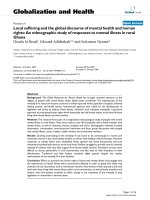
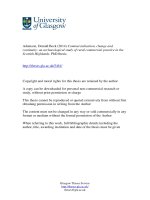
![garvis - 2009 - does firm size matter in cg - an exploratory examination of bebchuk's entrenchment index [cgs-e-index]](https://media.store123doc.com/images/document/2015_01/02/medium_jnl1420194789.jpg)
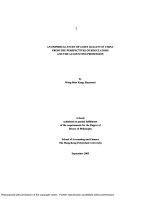
![garvis - 2009 - does firm size matter in cg - an exploratory examination of bebchuk's entrenchment index [cgs-e-index]](https://media.store123doc.com/images/document/2015_01/06/medium_wgg1420548413.jpg)

